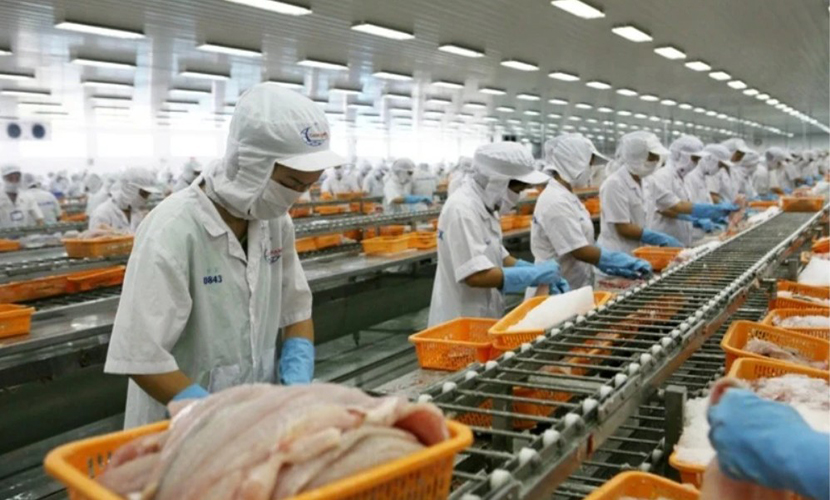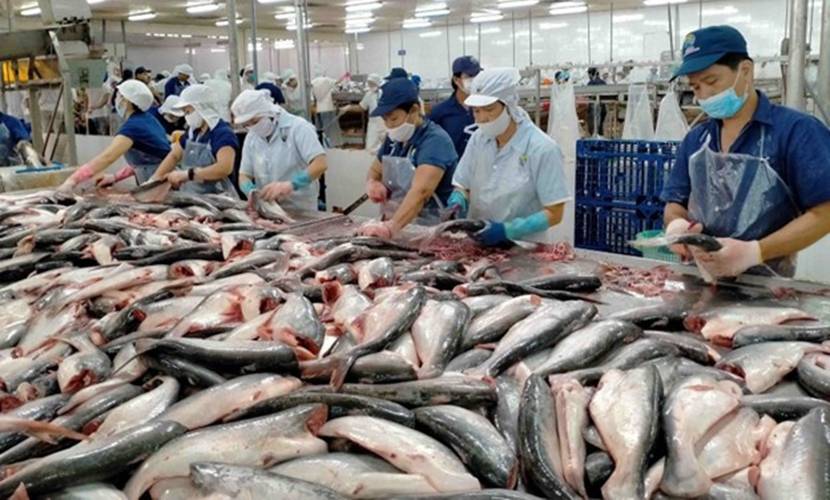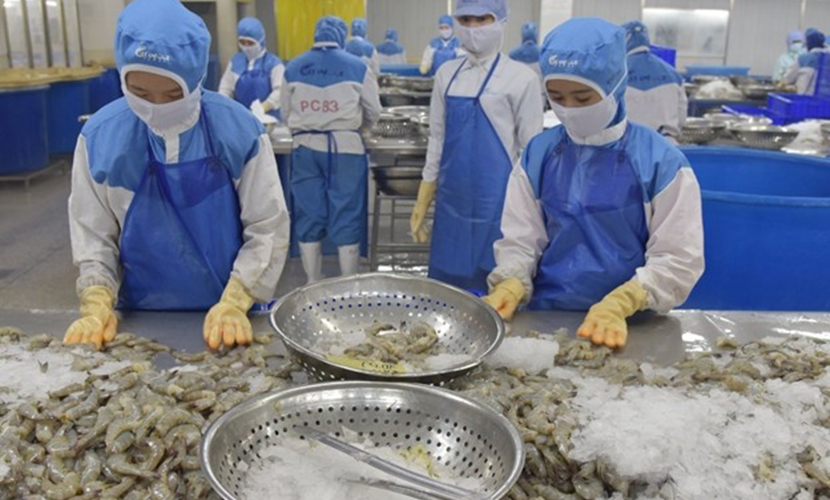
In the first ten months of 2025, Vietnam’s seafood exports recorded an impressive growth of 16%, reaching $9.5 billion. Shrimp continues to play the role of the “driving force,” while pangasius has shown a strong recovery in many markets. They provide an important momentum for the industry to pursue sustainable growth in the fourth quarter.
According to the Vietnam Association of Seafood Exporters and Producers (VASEP), in the first ten months of 2025, Vietnam’s seafood exports reached $9.5 billion. They went up 16% compared to the same period in 2024.

Vietnamese seafood exports
Shrimp continues to be the Vietnam’s seafood exports, generating $3.9 billion, an increase of 22% year-on-year. With the strongest growth among product groups, shrimp plays a leading role in driving the overall growth of the industry.
China and Hong Kong remain Vietnam’s largest shrimp import markets. Imports have exceeded $1 billion, up 66% compared to the same period last year. They are also the fastest-growing market, accounting for 28.2% of total shrimp export turnover.
Notably, other shrimp types grew by 139% and accounted for 65.6% of shrimp exports to this market. Meanwhile, live, fresh, and frozen shrimp increased by 145%, reflecting strong demand for premium products such as live lobsters.
White-leg shrimp exports to China increased by only 3%. However, processed shrimp products rose by more than 114%, indicating a shift in urban Chinese consumers toward convenient products. Black tiger shrimp also maintained stable growth at 7.7%. As a result, it continues to hold a solid position in major cities such as Guangzhou and Shanghai.
On the other hand, shrimp exports still face risks from tightened cross-border policies and strict traceability requirements. However, in the last quarter, demand from China may slightly increase due to the Lunar New Year 2026.

Pangasius (tra fish) – one of the key Vietnamese seafood exports
Pangasius (tra fish) – the second strategic Vietnam’s seafood exports – is gradually recovering after a stagnant Q3. In October 2025 alone, pangasius exports reached $217 million, up 8% year-on-year. In the first 10 months, total export turnover reached $1.8 billion, an increase of 9%.
China and Hong Kong continued to shine, with exports reaching $73 million in October, up 19%. In contrast, the U.S. market fell 17% (to $29 million), and the U.K. dropped sharply by 33% (to $4 million). However, Brazil recorded a slight increase of 1%, indicating that demand is beginning to stabilize.
Markets within the Comprehensive and Progressive Agreement for Trans-Pacific Partnership (CPTPP) grew strongly. They reached $305 million over the first 10 months, up 36% and accounting for 17% of total pangasius exports. Malaysia stood out with a notable increase of 37%. In the European Union (EU), exports reached $149 million, up 3%, with Spain achieving an impressive 22% growth.
The product structure of pangasius also showed positive shifts: frozen fillets reached nearly $1.5 billion, up 11%. Meanwhile, whole frozen or dried pangasius reached $315 million, up 0.1%. Also, processed products reached $44 million, up 19%, reflecting significant potential for value-added products.
After a decline in Q3, the pangasius market showed signs of recovery in October 2025. Notably, many major markets recorded modest growth. However, VASEP forecasts that some key markets may still decline in Q4 due to high inventory levels and slower import cycles.

Vietnamese shrimp
A crucial highlight is the preliminary conclusion from the 20th administrative review (POR 20) on anti-dumping duties for Vietnamese pangasius exports to the United States. The review set the anti-dumping rate at 0%, significantly boosting importer confidence. Nevertheless, the 20% countervailing duty continues to affect profit margins, requiring Vietnamese seafood companies to further expand markets and optimize costs.
In this context, the industry’s main strategy will be to strengthen exports to the CPTPP bloc and the Middle East. Both regions offer tariff incentives and stable demand for Vietnam’s seafood exports. The EU is expected to maintain growth momentum thanks to more flexible policies for aquaculture products, creating opportunities for deeply processed items.
With positive growth signals from shrimp and pangasius, combined with broad market potential, Vietnam’s seafood sector has the opportunity to maintain its strong momentum in Q4 2025. It can also approach 2026 proactively, with expectations of a strong and sustainable recovery.
Vietnamese source: https://thuehaiquan.tapchikinhtetaichinh.vn/thuy-san-viet-nam-dat-moc-95-ty-usd-sau-10-thang-200950.html
